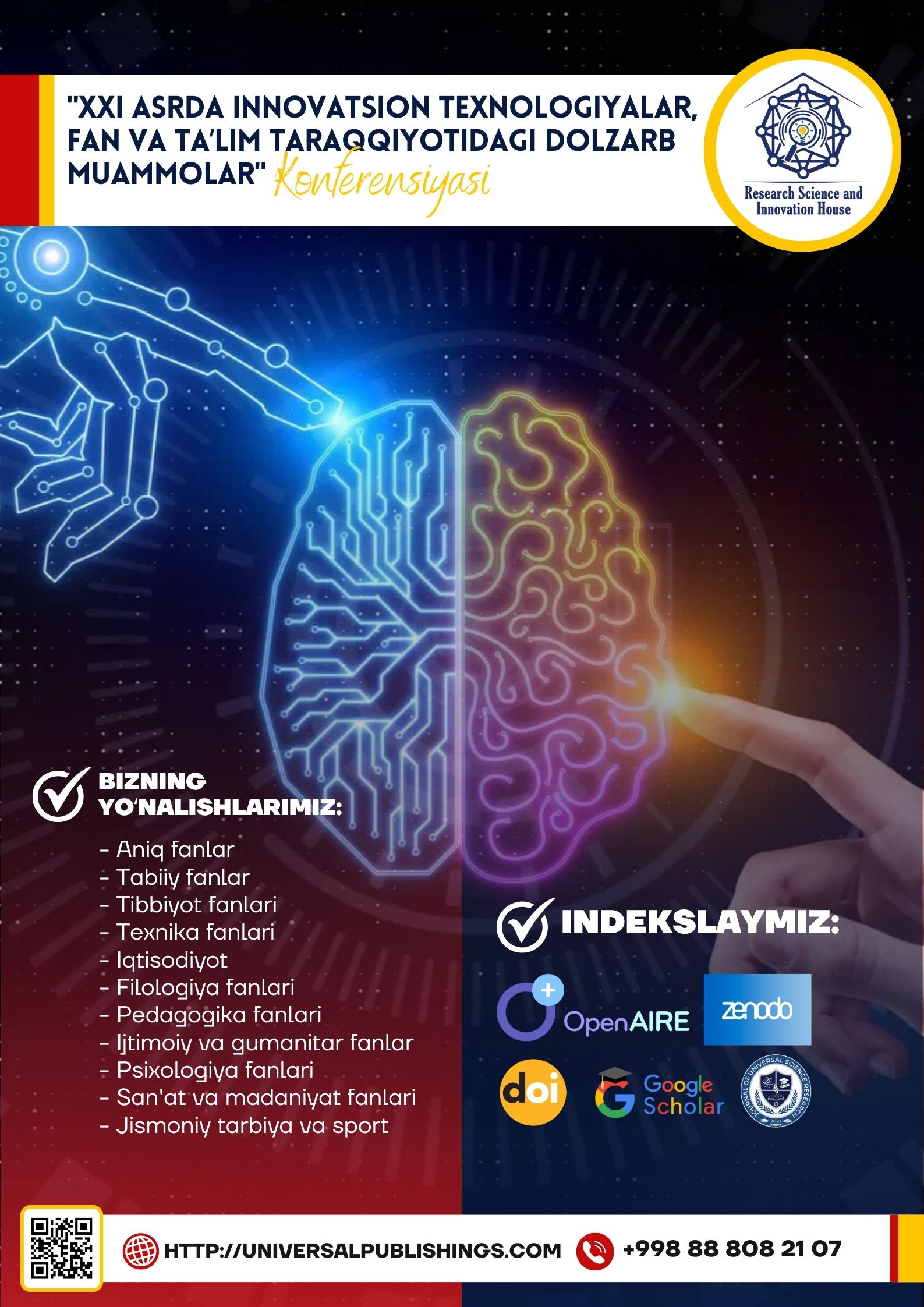Abstract
This article provides a comprehensive overview of sound alternations, a key concept in phonology that explains systematic variations in pronunciation within languages. It begins by defining sound alternations and describing how they manifest through various types, such as assimilation, dissimilation, insertion, deletion, lenition, fortition, vowel harmony, and metathesis. The article highlights the motivations behind sound alternations, including ease of articulation, rhythmic flow, morphological rules, and historical language changes. By presenting examples from languages like English, Spanish, Japanese, and Turkish, the article illustrates the universality and diversity of these phonological processes. In the conclusion, the article emphasizes the significance of sound alternations in facilitating smooth, efficient communication and shaping linguistic evolution over time. An additional conclusion underscores how these alternations reveal insights into broader linguistic principles and historical language shifts, offering valuable perspectives on how languages adapt to meet the needs of their speakers. This article serves as a useful resource for linguistics students, language enthusiasts, and anyone interested in understanding the subtle yet powerful role of sound patterns in human language.
References
1. Blevins, J. (2004). Evolutionary Phonology: The Emergence of Sound Patterns. Cambridge University Press.
2. Hale, K., & Reiss, C. (2000). Phonology: Theory and Analysis. Wiley-Blackwell.
3. Hayes, B. (2009). Introductory Phonology. Blackwell Publishing.
4. 4. Kenstowicz, M. (1994). Phonology in Generative Grammar. Blackwell Publishing.
5. Kiparsky, P. (1982). From Cyclic Phonology to Lexical Phonology. In S. Anderson & D. Kiparsky (Eds.), The First Symposium on Lexical Phonology. MIT Press.
6. Ohala, J. J. (1993). The Phonetics of Sound Change. In C. Jones (Ed.), Historical Linguistics: Problems and Perspectives (pp. 237-278). Longman.
7. Trask, R. L. (1996). A Dictionary of Phonetics. Routledge.
8. Teshaboyeva, N., & Mamayoqubova, S. (2020). COMMUNICATIVE APPROACH TO LANGUAGE TEACHING. In МОЛОДОЙ ИССЛЕДОВАТЕЛЬ: ВЫЗОВЫ И ПЕРСПЕКТИВЫ (pp. 409-414).
9. Teshaboyeva, N. (2020). LINGUISTIC PERSONALITY, ITS STRUCTURAL CHARACTERISTICS IN THE NEW PERSPECTIVE DIRECTIONS. In МОЛОДОЙ ИССЛЕДОВАТЕЛЬ: ВЫЗОВЫ И ПЕРСПЕКТИВЫ (pp. 415-420).
10. Teshaboyeva, N. Z. (2019). TEACHING ENGLISH THROUGH LITERATURE INTESL AND TEFL CLASSROOMS. In СОВРЕМЕННЫЕ ТЕХНОЛОГИИ: АКТУАЛЬНЫЕ ВОПРОСЫ, ДОСТИЖЕНИЯ И ИННОВАЦИИ (pp. 82-84).
11. Хидирова, Д., & Тешабоева, Н. (2022). Pedagogical conditions for the development of the healthy thinking in students. Zamonaviy innovatsion tadqiqotlarning dolzarb muammolari va rivojlanish tendensiyalari: yechimlar va istiqbollar, 1(1), 120-122.
12. Gaybullayeva, N. D. K., & Kizi, T. N. Z. (2022). THE ROLE OF INNOVATIVE METHODS FOR LISTENING COMPREHENSION IN TEACHING LANGUAGE LEARNERS FOREIGN LANGUAGES AND MAINLY ENGLISH. Central Asian Research Journal for Interdisciplinary Studies (CARJIS), 2(10), 8-10.
13. Teshaboyeva Nafisa Zubaydulla qizi, Jurayev Muhammadrahim Murod o’g’li, & Mamirova Munisa Rajab qizi. (2021). Language Learning Culturally and the Role of Literature in Teaching Process. Central Asian Journal of Theoretical and Applied Science, 2(3), 1-5. Retrieved from https://www.cajotas.centralasianstudies.org/index.php/CAJOTAS/article/view/84
14. Teshaboyeva, N. (2023). THE IMPORTANCE OF TOURISM IN PRESENT DAY. Журнал иностранных языков и лингвистики, 5(5).
15. Teshaboyeva, N. (2023). THE MODERN INNOVATIVE TECHNOLOGIES IN TEACHING FOREIGN LANGUAGES. Журнал иностранных языков и лингвистики, 5(5).
16. Teshaboyeva, N. Z. (2023, November). Adjective word group and its types. In " Conference on Universal Science Research 2023" (Vol. 1, No. 11, pp. 59-61).
17. Teshaboyeva, N. Z. (2023, November). Modifications of Consonants in Connected speech. In " Conference on Universal Science Research 2023" (Vol. 1, No. 11, pp. 7-9).
18. Teshaboyeva, N., & Rayimberdiyev, S. (2023, May). THE IMPORTANCE OF USING MULTIMEDIA TECHNOLOGY IN TEACHING ENGLISH CLASSES. In Academic International Conference on Multi-Disciplinary Studies and Education (Vol. 1, No. 8, pp. 149-153).
19. Nafisa, T., & Marina, S. (2023). TEACHING AND LEARNING OF ENGLISH VOCABULARY IN TESL AND TEFL CLASSROOMS. International Journal of Contemporary Scientific and Technical Research, 465-469.

